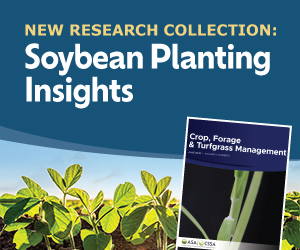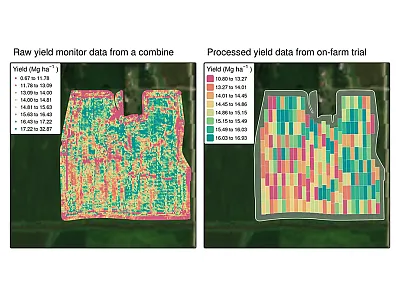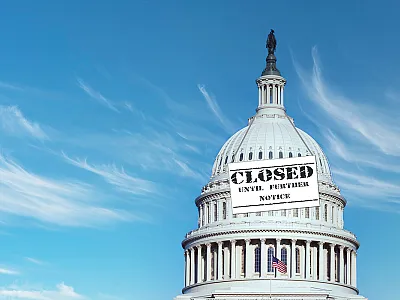A day in the life: Lee Briese
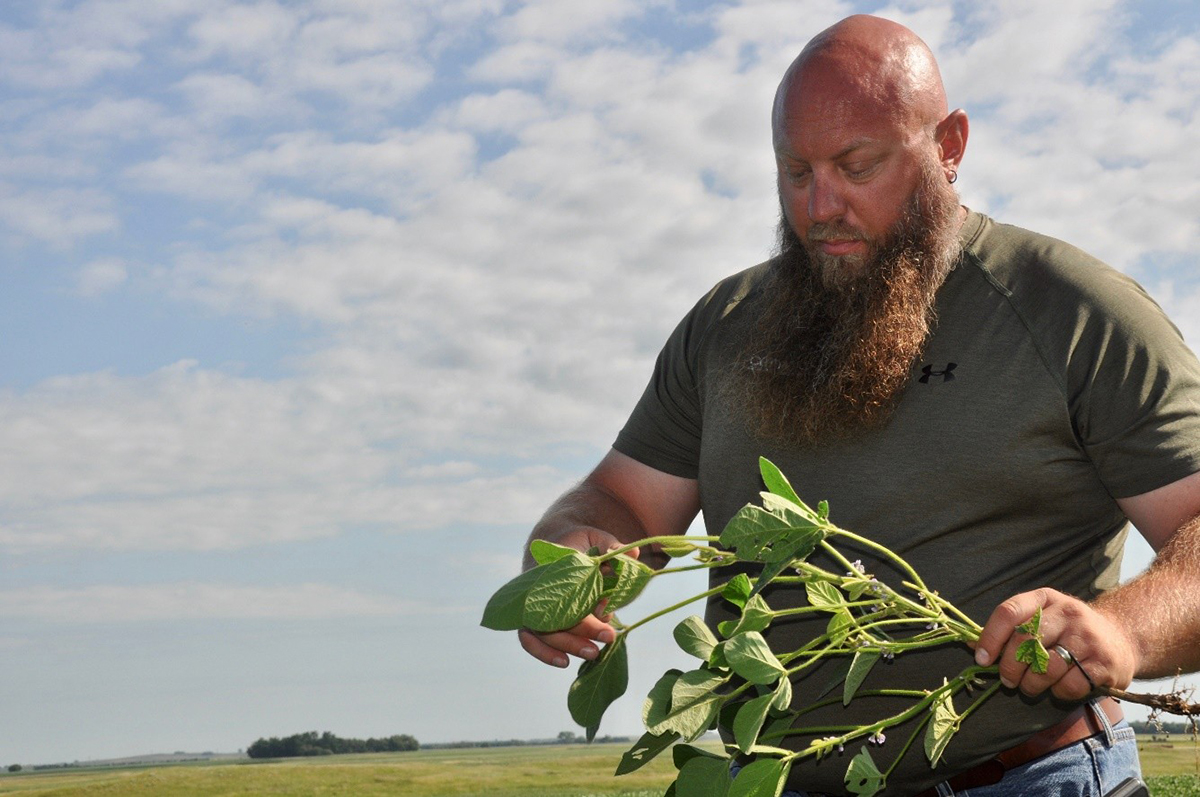
What can you do with a career in agronomy, crop, soil, and environmental science? In our series, “A Day in the Life,” we’ll introduce you to some ASA, CSSA, and SSSA members doing cool things with our sciences. This month, we’re talking with Lee Briese, a crop consultant with CENTROL in North Dakota and a Certified Crop Adviser (CCA).
What can you do with a career in agronomy, crop, soil, and environmental science? Our series, “A Day in the Life,” introduces you to some ASA, CSSA, and SSSA members doing cool things with our sciences. This month, we meet Lee Briese, a crop consultant with CENTROL in North Dakota and a Certified Crop Adviser (CCA). With a bachelor’s and master’s from North Dakota State University and a doctorate in Plant Health from the University of Nebraska, for over 25 years Briese has helped farmers adopt sustainable practices like reduced till, cover crops, and crop rotation to improve soil health, the environment, and profitability. “I love my job. You get to see the amazing transformation of a tiny little seed into a great big plant in a very short period of time,” Briese says. “It’s where science and practice come together. That’s really my job, to bring science to the farm and implement it.”
This interview has been edited for length and clarity.
CSA News: If you’re on an elevator with a stranger and they ask you what you do, how would you explain it to them in 30 seconds or less?
Briese: I’m a plant doctor. I work for farmers directly, and I go out and check their fields just like you would go to your doctor for regular checkups. I see what’s going on, and if everything’s good, you get a good report. If we’ve got some challenges, then I make a prescription to deal with them.
CSA News: What made you want to become a crop consultant? Can you talk about your path to your current position?
Briese: All the way back to being a kid in high school, we did a lot of ag stuff. In North Dakota, it was very common to do 4H, and through that, I did crops judging and land judging. But I took a bit of a different path. I thought I was going to be an engineer for a while and maybe a high school teacher. I ended up working for a small grain elevator in the southwestern part of the state, working with grains and commodities and selling grain and selling feed. I got interested in herbicides and pesticides and crop management stuff there, so then I went back to school to get my agronomy degree.
CSA News: What’s your work environment like? Are you typically in the field, in the office, or both?
Briese: The bulk of the work we do is in the field. The plants can’t come to me, so I go to them. We go out in the field, mostly on an ATV when the crops are small. We drive the entire field in a grid to see what’s going on six days a week starting in April through the end of June. After June into July, we’re walking the fields, spending a lot of time on foot checking. That goes all the way through approximately September.
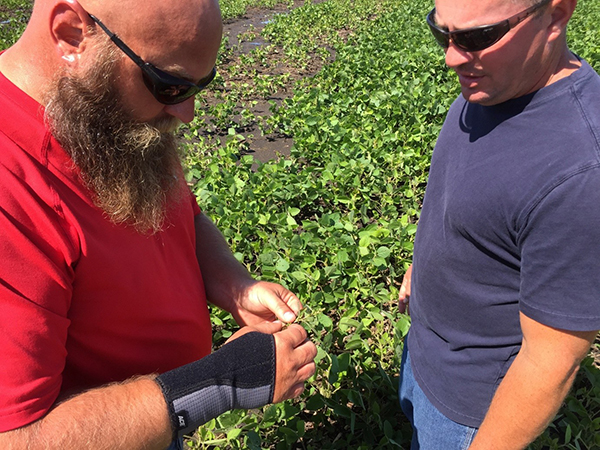
In the early season, there's a lot more visits and a lot more things to worry about. Once the crop starts to mature, there's less to worry about. When it rolls into fall after harvest, we go out and soil sample. Then after that season, we go into meeting and planning season. That’s some office work, but it's a lot of farm visits. We’re planning which crops farmers are going to plant and what products they need to do that: the herbicides, the pesticides, fertilizers. Then we see what the weather does, and we start over.
CSA News: What’s the most challenging part of your job, and what’s the most rewarding part?
Briese: The most challenging part is just dealing with the weather. We have to have several plans of attack ready; if we get good weather we're going to do this, if we don't have good weather and we get delayed we’re going to do that, and if it’s really bad, then we’re going to do a third thing. And then after that, we just kind of make it up as we go.
The most rewarding part? I like a lot of aspects. Fall is my favorite time because that’s when the farmers start to harvest, and we start to see the fruits of our labor. The rewarding part is really seeing the crop come in. I love harvest.
CSA News: Do you work independently, or in teams?
Briese: I work directly for the farmer, but I also have a team of my own. I have a full-time technician who is with me all year long. Then we have summer interns that work with us during the busy season while the crops are growing. And then on top of that, within my company, there are groups and areas that work together and share information with each other about how things are doing, whether things are working, what the weather’s doing, and how we’re responding. I also work with outside groups. I work with some NRCS personnel, and sometimes I work with university personnel trying to help them find fields to do trials or testing.
CSA News: What might surprise people about the work you do?

Briese: Probably how much science and technology there is in this. It’s very cool now to have self-driving cars, right? But we’ve had self-driving tractors for decades. The ag sector has been way ahead as far as the use of satellite imagery and global positioning. I do a lot of work with satellite images and building field maps. We build prescriptions to tell the machines what to do, when to do it, how to do it, and they run almost autonomously. I think the layperson would probably be very surprised at how much technology there really is in a production agriculture.
CSA News: What advice would you give to an aspiring agronomist?
Briese: Try to find a seasonal internship. The industry is so seasonal—there’s a high demand for labor in certain parts of the year. It’s a really good way to get hands-on experience with that profession. You get to see a lot of what’s going on and talk with the people you’re working with. Plus you’ll be exposed to the other facets of the industry that we work closely with, like the custom applicators, the retail agronomists, the farmers themselves, and the extension personnel.
Dig deeper
Check out the following podcast featuring Lee Briese:
Podcast: What Are the Barriers Keeping Farmers Out of Carbon Markets?
Text © . The authors. CC BY-NC-ND 4.0. Except where otherwise noted, images are subject to copyright. Any reuse without express permission from the copyright owner is prohibited.




